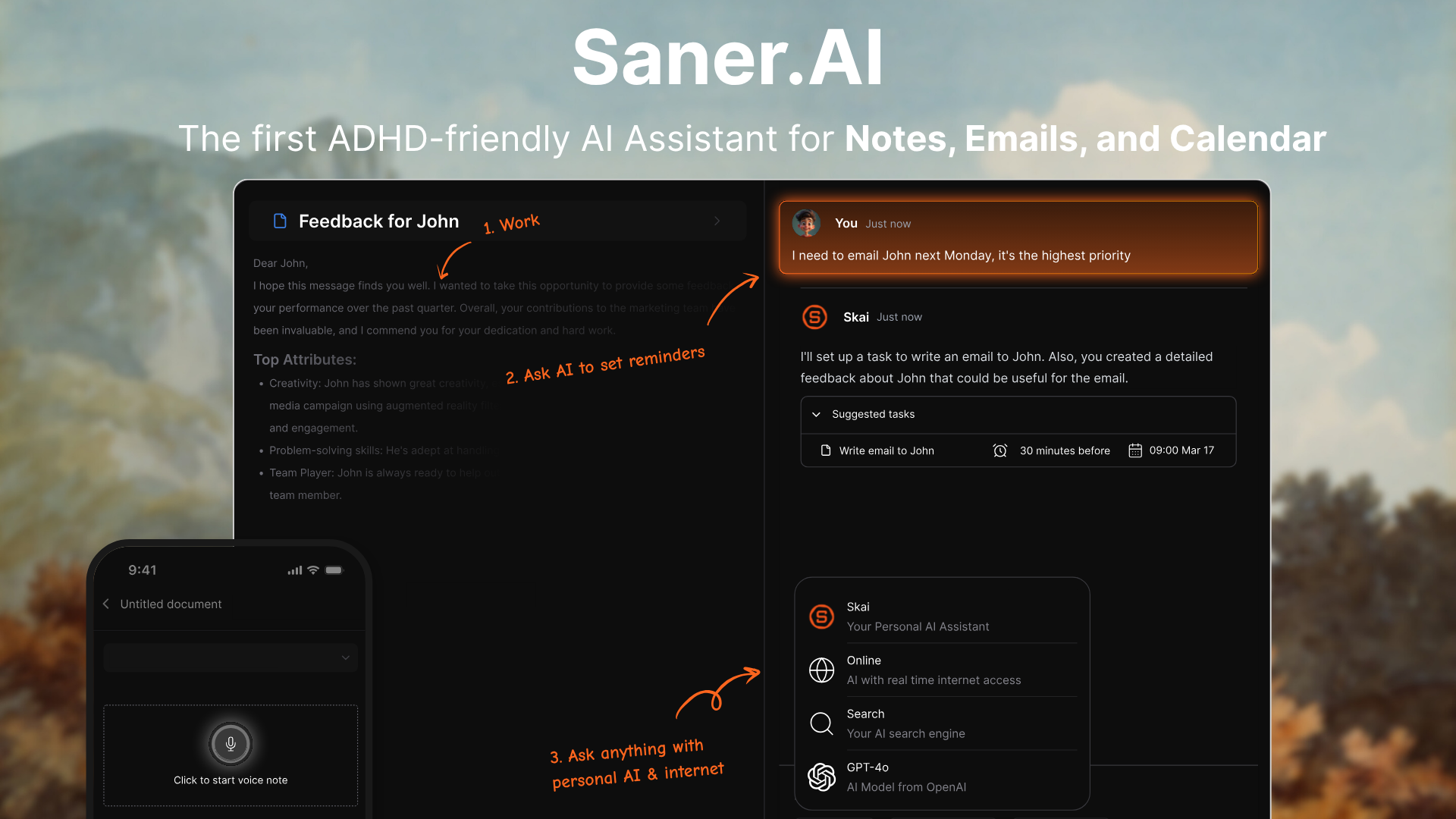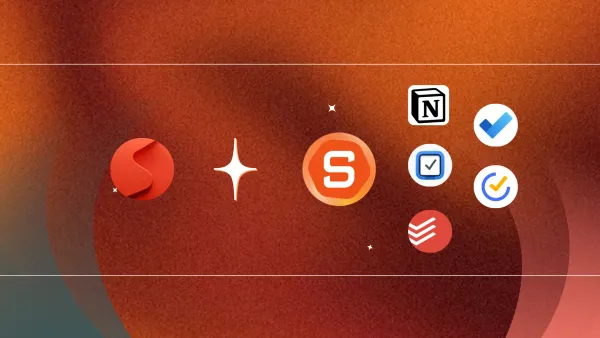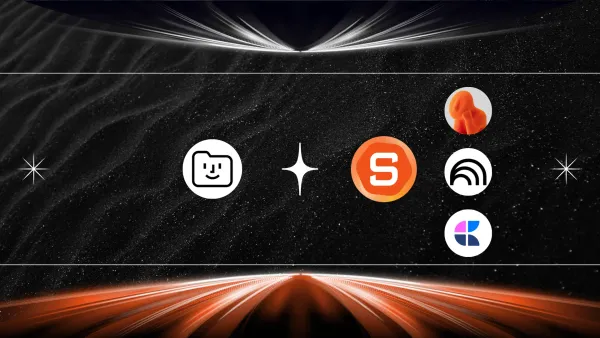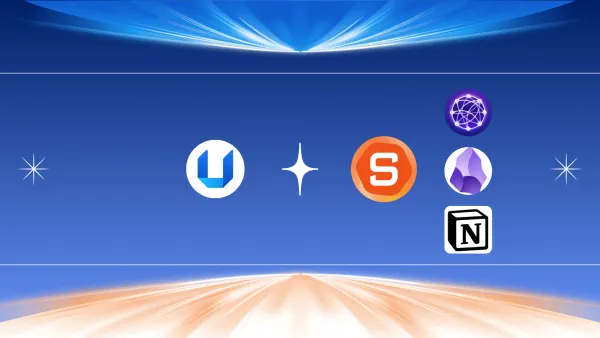Brain Dump - 3 Practical Steps to Overcome Overwhelm

Brain Dump - Solutions for people who always feel overwhelmed
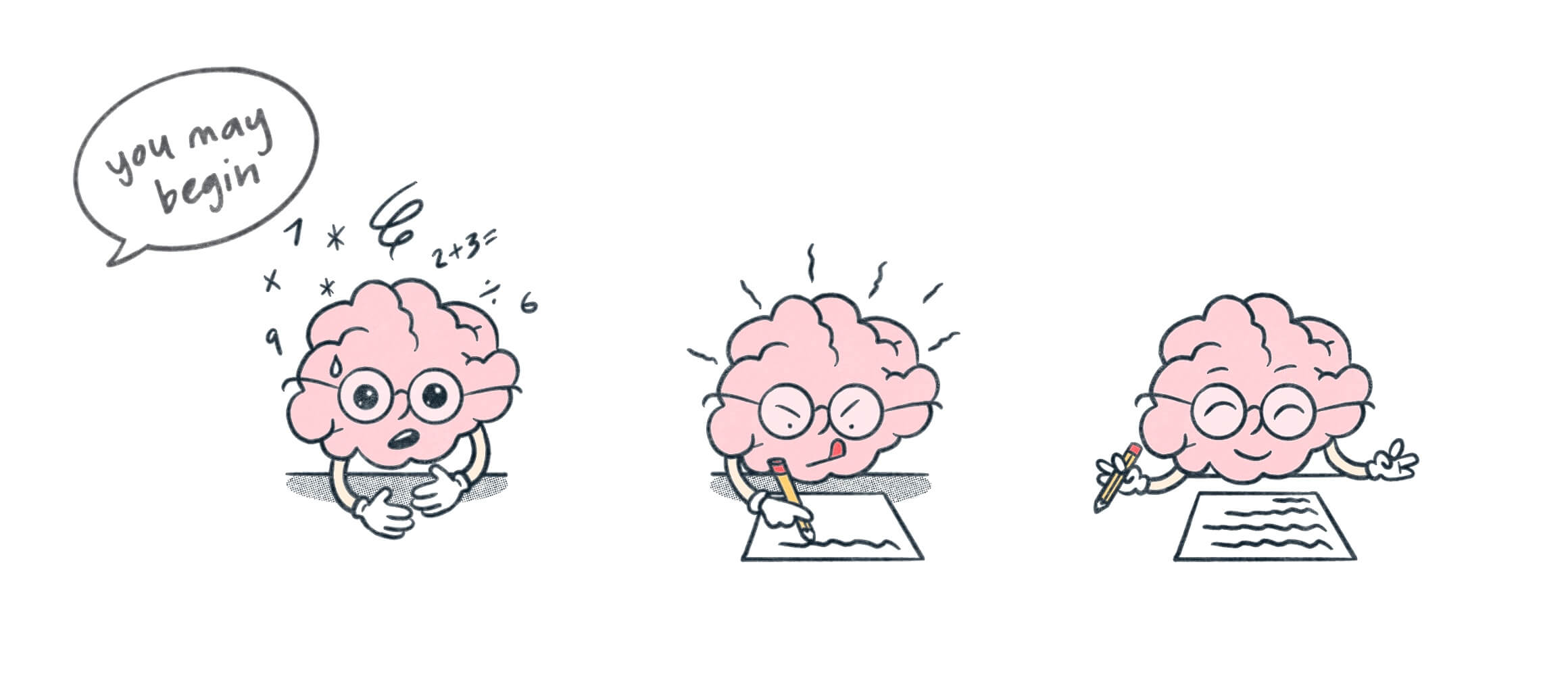
Information coming from many sources, such as social networks, work, and family,... always clutters your brain with an information system that needs processing.
You need a solution to this problem, and a brain dump is a great way!
I. Overview Brain Dump
1. What is Brain Dump
There are too many concepts for Brain Dump, but in the simplest terms, it is the transfer of knowledge in your brain to another storage medium such as paper, computer hard drive, or tools... It can free you from overload, not being able to remember, or even worse, "brain paralysis".
When you start getting used to brain dumping, it will be very difficult for you to write down your thoughts, but you know, "a difficult beginning often has a very beautiful ending".
Here are some simple ways to use this method effectively
2. Four types of the Brain Dump technique
In your notes, you can use these types of brain dumps to organize information better:
1) Free flow - This is best used when trying to calm your chaotic mind. You just write anything and everything without changing or deleting.
It could be a new idea running through your head, or something you've been thinking about.
2) Focus on goals - this is intentional writing, and the best way to plan your day.
It could be an evening where you list the tasks or plans you plan to do the next day. This will help you have a less anxious night and sleep better. Basically, prioritize tasks and be prepared in advance.
3) Gratitude - In this style, you focus on the positives—everything you're grateful for and everything you've accomplished will be written or marked complete.
It's a great way to change your perspective; regularly practicing gratitude can significantly reduce anxiety and foster a greater sense of well-being.
4) Weekly Review - This is your weekly summary where you take some time to reflect on the past week's achievements and reassess your broader life goals. This is a great opportunity to see where you are on your life map and make adjustments to ensure you're in line with your long-term aspirations.
3. The Benefits of Brain Dumping

1) Using Brain Dumping to Manage Your Mental Health
Work stress has somewhat impacted the mental health of many people. When stress and anxiety start to take over, you can really feel like your thoughts are a jumbled mess, leaving you easily stuck and disoriented.
One 2021 study found that participating in a brain dump activity helped lower students’ intrinsic cognitive load. Research from 2021 also shows that writing things down can improve recall and memory.
Using a Brain dump will give you a sense of control:
- Lighten your load: Just by writing down those nagging, worrying thoughts, you may feel a significant burden being lifted from your head, your brain will relax a bit.
- Clarity and direction: Seeing your thoughts laid out right in front of you can help you easily identify what's really bothering you and guide you to find the solution or direction you have never seen before.
Next time you feel overwhelmed, try doing a brain dump. Just write down everything on your mind to help you relax for a bit.
2) Brain Dump increases productivity and focus
When your mind is full of thoughts and you can't concentrate on any one thing, it can be tough to decide what to do next.
Should you focus on the new task from your boss to earn some praise, or should you go pick up your kids to take care of your family duties?
It's easy to spend a lot of time just sitting and thinking without getting anything done. All your tasks, chores, and worries are fighting for your attention.
Brain dump helps you to eliminate the mental distractions and free up space for more focused work. Here’s how:
- Prioritize easily: By writing everything down, you can see all your tasks and worries laid out before you. This makes it easy to spot urgent or important items, allowing you to reduce your mental burden by crossing them off your list.
- Clear the clutter in your mind: Once you've identified what really needs your attention, you'll find it easier to focus. With fewer distractions, you can devote your energy to what really matters, whether that's excelling at work or being there for your family.
3) Improve creativity and don't miss important information
Have you ever felt a good idea flash through your mind and then disappear? You try to remember it, but can't, it's so annoying, isn't it?
When your brain is clogged with worries and to-dos, it can't flow freely, you miss many opportunities to grasp ideas and sometimes forget important information.
At times like these, take a moment to write down your thoughts, because:
- You may see connections between ideas you hadn't considered before, which will spark inspiration. When your mind is less cluttered, you'll be open to fresh perspectives and creative solutions.
- When ideas come and go quickly, you might miss chances to be creative. Remember, opportunities aren't really lost; they're just grabbed by someone else if you don't take them.
4) Enhance decision-making
It’s important to consider all the necessary factors when making decisions. But that can be hard to do when your mind is preoccupied with other thoughts.
By putting your thoughts down during a brain dump, you lay out all the pros, cons, and concerns impacting your decision. This visual representation helps you weigh your options more objectively.
When we’re anxious, we often make rash choices. Brain dumping also helps you separate your emotions from the decision-making process so that you can assess the situation clearly. It cuts through the mental chatter and identifies what’s most important and effective for reaching the outcome you want.
4. Who can get the most benefits from a brain dump?
Brain dump is a versatile tool that can benefit many individuals, especially those with specific focus or attention difficulties, such as ADHD. Here are people who may find braindumps particularly useful:
- ADHDers and People with high-stress levels: Brain dump are beneficial for people with ADHD because they help reduce mental clutter, increase focus, and improve organization. By regularly recording thoughts and tasks, people with ADHD can manage overwhelms and plan more effectively.
- Students: Students of all ages can benefit from a mental workout to clear their minds before studying, which can improve concentration and memory. It is also useful for coming up with ideas for projects or essays.
- Experts: In any professional environment, from corporate environments to creative fields, mental focus can help manage workload and stress. It's a great way to prioritize tasks and clarify goals for the day or week ahead.
- Writers and artists: Creative people often have countless ideas floating around. Brain dumps can help capture these thoughts and discover connections between seemingly unrelated ideas, potentially sparking new creative projects.
- Organizers and planners: People who are successful at organizing can use their intellect to organize their thoughts and refine their planning strategies, ensuring that nothing important is overlooked.
- Entrepreneurs: Entrepreneurs often have to juggle multiple tasks and ideas. Brain dumps can help them clear their minds, prioritize tasks, and focus on important aspects of their business.
- Anyone who feels overwhelmed: Essentially, anyone who feels overwhelmed by thoughts, tasks, or responsibilities can use brain dumping to gain clarity and relieve mental pressure. It is a simple, adaptable strategy that can be adjusted to fit individual needs and lifestyles.
II. Difficulties in using Brain Dump

Using the brain dump method can be tricky because everyone has different reasons for doing it. Some people use it to clear their minds, while others use it for planning or taking notes.
Here are some common challenges with brain dumping. You can use this information to pick the best way to do a brain dump and avoid mistakes.
Here are two common difficulties:
1. Using too many note-taking tools
Information flashes by very quickly, you are unprepared, so taking notes quickly is obvious; that's why sometimes the information you record is scattered across applications. digital apps, notebooks, sticky notes, or even random pieces of paper.
- The variety of locations can make it difficult to retrieve information when needed, as one has to remember where each piece of information is stored, which doubles the headache.
- This scattering of notes can increase anxiety and feelings of overwhelm because important tasks or ideas may be forgotten or overlooked.
2. The amount of information is too large
Another problem is that there are too many notes and information for you to search. While the main purpose of a brain dump is to help a person clear their mind by transferring thoughts to paper or digital format, without a method of filtering or prioritizing these notes, one may find that there is a large amount of information that is difficult to manage.
- This can lead to increased mental clutter, as the individual may feel burdened by vast amounts of unorganized and unprocessed information.
- You will find it difficult to find information, distinguish between urgent tasks and less important ones, potentially leading to procrastination or neglect of important tasks.
How to do Brain Dump effectively?
1. Choose a suitable app
Saner.AI
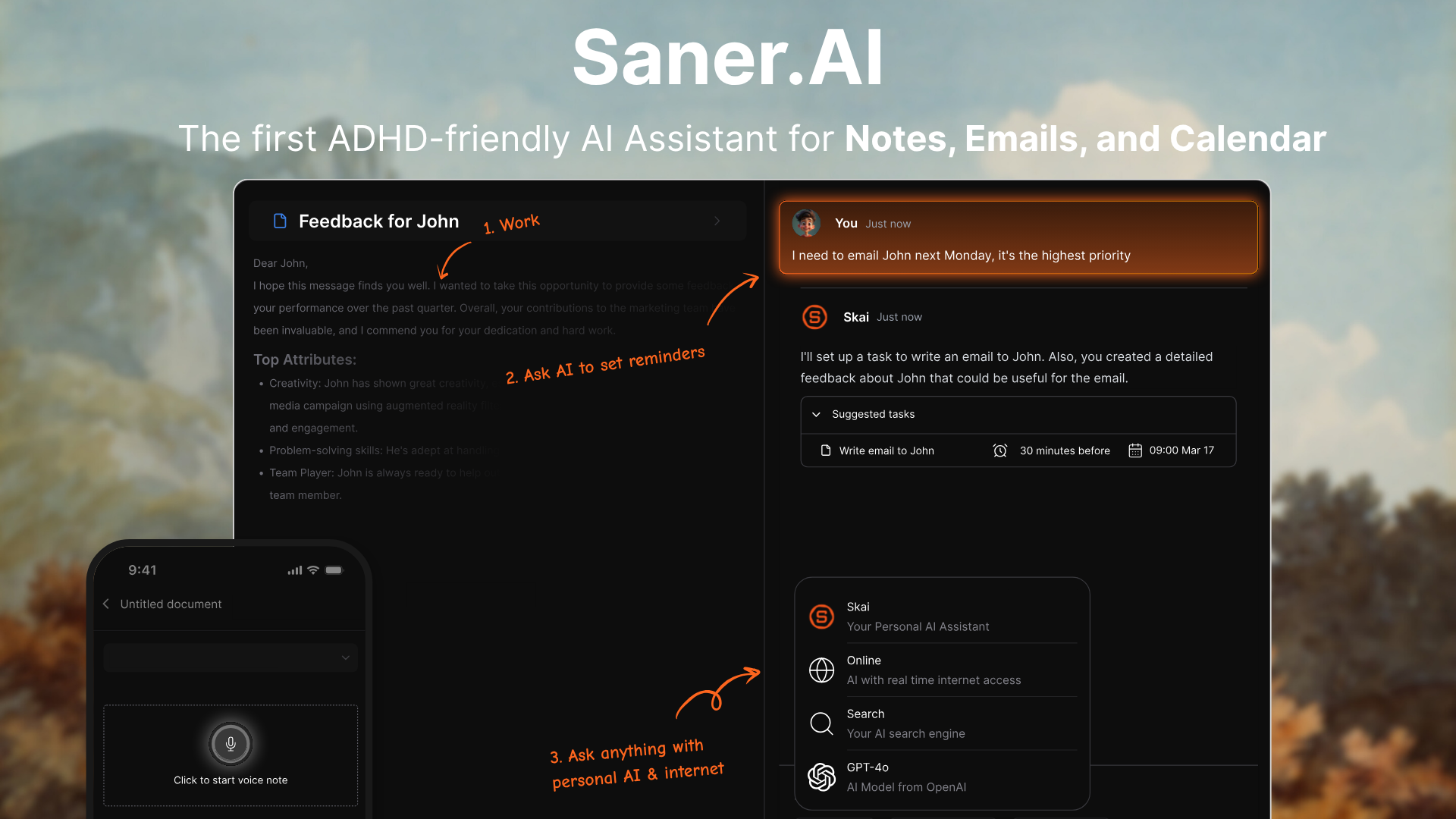
Saner.AI is the best app for brain dumping.
It’s designed to help you unload your thoughts quickly (typing/voice) and then organize them automatically using AI. You don’t need to tag, sort, or even remember what you said. Just dump, and it’ll make sense of the chaos later.
It’s especially great if your mind moves fast or you have ADHD
Key features
- Quick Capture: Dump thoughts instantly using voice, typing, or the Chrome extension
- AI Organization: It breaks down messy ideas into tasks, notes, and topics
- Smart Search: Ask the AI to find things like “what did I say about marketing?” - and it will
- Smart Task Planner: Extracts to-dos from your brain dump and schedules them
- Proactive AI: It scans your notes, emails, and calendar every morning to provide an optimal day plan. Then it checks in during the day to make sure you actually follow through
- Minimal Interface: Distraction-free, ADHD-friendly, no clutter
What I liked
- I love that I can dump 30 random ideas in a row, and Saner makes sense of it
- The AI assistant actually understands follow-up questions about my own thoughts
- I love that I can brain-dump thoughts, and Skai pulls out tasks or connects them to past ideas
- I don’t have to organize anything upfront - it just works
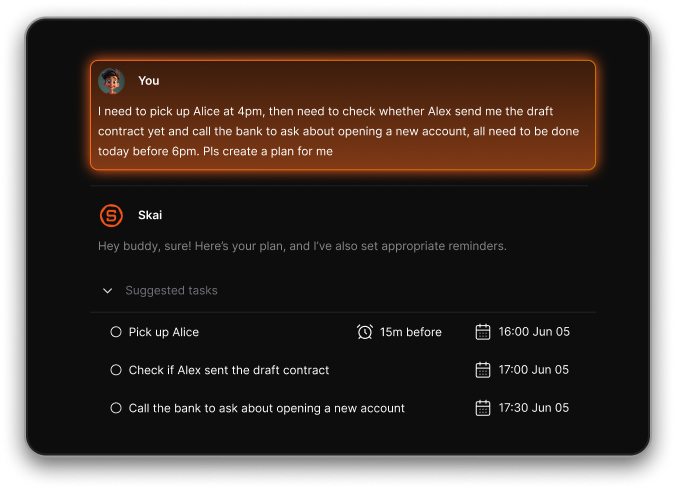
Cons:
- Requires internet access for full functionality
Pricing
- Free plan available
- Starter plan: ~$12/month
- Pro plan: ~$20/month
Ideal for:
- Anyone who needs an app for brain dump workflows
- ADHDers, creatives, solo founders, and researchers
- People who want to get stuff out of their heads, without losing track of it
Saner.AI review

How to start using it?
- Visit the Saner.AI website and sign up for an account
- Start brain dumping
Brain dump without worrying
2. Three steps for an effective brain dump
1) Capture everything

Best general method for a brain dump
- Write down everything: Start by writing down whatever is on your mind. It doesn't matter if it's messy or not organized. Just get your thoughts out on paper or on a computer.
Benefit
- This ensures you don't miss any important information. By capturing all your thoughts, you make sure that no valuable ideas or tasks are overlooked.
Using Saner.AI for Brain Dump
- Capture Information Quickly with the Chrome Extension: saner.ai has a tool that works in your internet browser. It lets you quickly save any information you find online. This is great for keeping track of things without interrupting your browsing.
- Record fleeting Information with voice mode via the Mobile app

2) Sort your notes

After capturing the necessary information, you start with reviewing and classifying the information therein.
Best general method for a brain dump
- Create different topics and organize the ideas you get into appropriate categories, you should even have a section for your random, miscellaneous thoughts.
- Tips: you can rely on the brain dump classification above to sort
Benefits
- When you do this work, you will easily notice the change in your mind, your mind becomes more focused, and you can recognize which areas need to spend more time and effort.
- An effective brain dump will draw your attention to the things that really matter.
When performing the brain dump method, many people often feel skeptical about its effectiveness. They believe that some written information is useless, "a waste of time to write". But remember, what you write sometimes doesn't work now but you may need it someday in the future.
Using Saner.AI to make it easier
- Auto tag feature: This tool automatically sorts your notes into categories for you. It makes organizing easier.
- Similar note feature: This helps you find notes that are related. It's useful for linking ideas together or grouping similar tasks.
Using these steps and tools can help you turn a messy pile of thoughts into a clear plan of action.
3) Review

Instead of wasting time thinking about what you have to do today and getting caught up in all that work, now all you need to do is go straight to the brain dump.
To make a to-do list from your brain dump, follow these steps:
- Go to your brain dump: Start by looking at all the information you've dumped into your brain dump.
- Pick top tasks: Identify the 2-3 most important tasks for the day. Consider what’s urgent or big and needs attention first.
- Set priorities: Arrange these tasks by their importance and urgency. Start with the most critical tasks.
- Or, you can brain dump to Saner.AI, and it will automatically pick out the tasks for you 😄
Benefit:
This method turns your notes into actionable tasks. By organizing your day around key priorities, you'll save time and energy. You'll know exactly what needs to be done and how to approach it, making your day more productive.
V. Conclusion
In conclusion, a brain dump is a great way to deal with daily information overload.
Choose an app, write down your thoughts, review them and you may feel more organized and less stressed!
FAQ for Brain Dump
1. What is a Brain Dump to Overcome Overwhelm?
A Brain Dump to Overcome Overwhelm is a simple mental clarity technique: write down everything swirling in your mind - tasks, worries, ideas - so your brain can breathe.
Instead of keeping it all in your head, try:
- Listing every “open loop” on paper or in an app
- Dumping thoughts without judgment or structure
- Letting your mind offload before prioritizing
Think of it as decluttering your mental desktop. Once everything’s out, it’s easier to organize, delegate, or delete.
2. Why does a brain dump help with overwhelm?
When your brain tries to remember everything, it gets stuck in alert mode. A brain dump:
- Frees up mental bandwidth
- Reduces anxiety by making the invisible visible
- Turns “too much” into something you can manage
It’s not just about writing - it’s about creating psychological distance from chaos.
3. How do I do a brain dump when I feel overwhelmed?
Here’s a quick brain dump routine you can do anytime:
- Grab a notebook or open a note app
- Set a timer (5–10 minutes)
- Write down everything on your mind—no filtering
- Don’t worry about organizing yet
- Review what you wrote and pull out clear next steps
This works whether you're overwhelmed at work, can’t sleep, or are juggling personal stress.
4. What should I include in a brain dump?
Everything. That’s the point. But common brain dump items include:
- To-dos and unfinished tasks
- Questions or worries
- Random reminders (“Call Mom,” “Update resume”)
- Ideas you don’t want to forget
- Emotional weight—yes, even “I feel behind” counts
If it’s taking up space in your head, it belongs in the dump.
5. When is the best time to do a brain dump?
Anytime you're feeling overwhelmed - but especially:
- First thing in the morning (mental reset)
- End of the day (clear your mind for rest)
- Before deep work sessions
- During high-stress weeks
Some people even schedule regular “mental unloads” once a week.
6. Can I use AI for brain dumps?
Yes. AI tools like Saner.AI let you brain dump in natural language - and then:
- Extract tasks from your thoughts
- Highlight priorities
- Connect ideas across meetings and notes
- Remind you of what matters later
You just think out loud. The AI organizes for you.
7. What’s the difference between a brain dump and journaling?
- Brain dump: Fast, raw, utility-focused. You’re clearing your mind.
- Journaling: Reflective, emotional, often narrative. You’re processing your thoughts.
They overlap, but brain dumps are more about getting unstuck, while journaling is about making sense.
8. How often should I do a brain dump?
As often as your mind gets cluttered. For some people, that’s:
- Daily (as part of a planning routine)
- Weekly (as a reset)
- Whenever anxiety spikes or tasks pile up
There’s no wrong frequency - just listen to your brain.
9. How do I turn a brain dump into action?
After the dump, follow these steps:
- Read through your list
- Highlight anything urgent, important, or time-sensitive
- Group related items (work, personal, errands)
- Turn fuzzy thoughts into clear actions
- Move actionables into your planner or task manager
This is where AI tools like Saner.AI shine - automating the extracting part so you don't have to waste time doing it manually
10. Is brain dumping good for ADHD or overthinkers?
Absolutely. It helps ADHD minds:
- Stop looping thoughts
- See the whole picture
- Reduce decision paralysis
- Get started without needing a perfect plan
It’s one of the simplest, lowest-effort ways to regain control when your mind is spinning.
Overcome the Overwhelm by Brain Dumping

